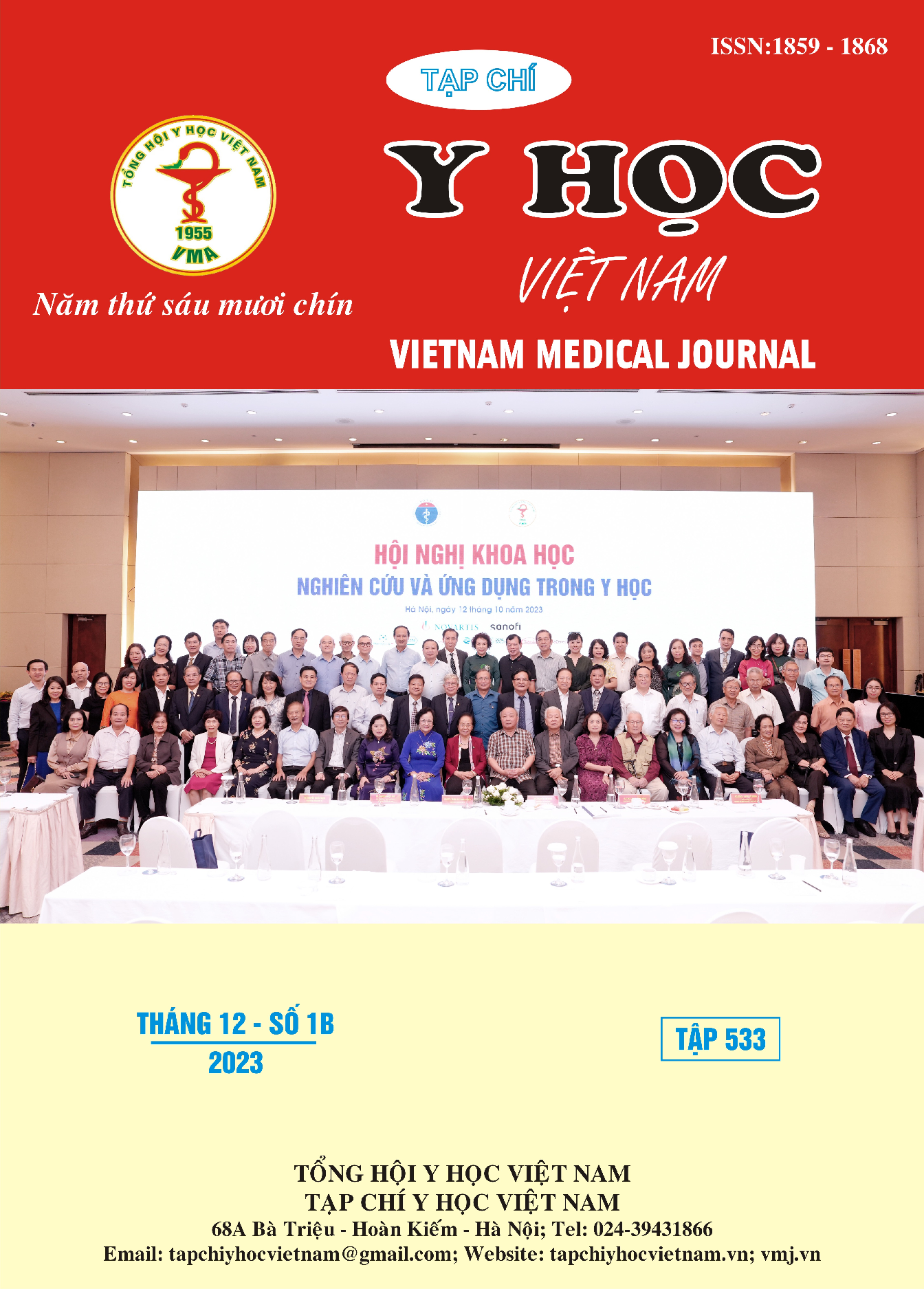CHARACTERISTICS OF CASES WITH DIAGNOSIS PATHOLOGY PLACENTA ACCRETA AT HANOI OBSTETRIC HOSPITAL
Main Article Content
Abstract
Objectives: Describe the clinical and paraclinical characteristics of cases with a pathological diagnosis of placenta accreta at Hanoi Obstetrics Hospital. Methods: Retrospective descriptive study of over 100 cases diagnosed with placenta accreta and cesarean section at Hanoi Obstetrics Hospital from January 2021 to January 2022. Results: The average maternal age in the study was 34.29 ± 4.56 years old; the most common age group is under 29 years old, accounting for 47.0%; Pregnant women with a history of cesarean section accounted for 92% of the total study subjects, of which the majority were 1 and 2 previous cesarean sections, accounting for 42% and 39%. Bleeding is the most common clinical sign (accounting for 57.0%). The majority of pregnant women have placenta praevia, accounting for 77%. The proportion of pregnant women diagnosed with placenta accreta level II is higher than 71.6%; The rate of placenta accreta level I accounts for 28.4%. Conclusion: Our study records the results of clinical and paraclinical characteristics of pregnant women with dental implants, especially the signs on Doppler ultrasound assessed before surgery, which will contribute to the surgery. Technicians predict the level of difficulty, as well as the possibility of blood loss, in cases of placenta accreta to provide appropriate treatment for each case.
Article Details
References
2. Miller DA, Chollet JA, Goodwin TM (1997). "Clinnical risk factor of previa placenta accreta", Am.J. Obstet Gynecol, 177(1), 210-214.
3. Eller AG, Porter TF, Soisson P. (2009). "Optimal management strategies for placenta accrreta", BJOG, 116, 648.
4. Trần Khánh Hoa (2018), Nghiên cứu thái độ xử trí rau tiền đạo cài răng lược trên sẹo mổ lấy thai cũ tại Bệnh viện Phụ sản Hà Nội, Trường Đại học Y Hà Nội, Hà Nội.
5. C. Mitric, J. Desilets, J. Balayla, et al (2019). "Surgical Management of the Placenta Accreta Spectrum: An Institutional Experience", J Obstet Gynaecol Can, 41(11), 1551-1557.
6. Klar M, Michels KB (2014). "Cesarean section and placental disorders in subsequent pregnancies – A metaanalysis", J Perinat Med, 42, 571-83.
7. Silver RM (2015). "Abnormal placentation: Placenta previa, vasa previa and placenta accreta", Obstet Gynecol, 126(3), 654-68.
8. Lê Thị Năm (2021), Nghiên Cứu các trường hợp bảo tồn tử cung trong mổ lấy thai bệnh lý Rau cài rang lược tại Bệnh viện Phụ sản Hà Nội. Trường Đại học Y Hà Nội.
9. D. De Vita, G. Capobianco, G. Gerosolima, et al (2019). "Clinical and Ultrasound Predictors of Placenta Accreta in Pregnant Women with Antepartum Diagnosis of Placenta Previa: A Multicenter Study", Gynecol Obstet Invest, 84(3), 242-247.
10. Trần Danh Cường (2011). "Chẩn đoán rau cài răng lược bằng siêu âm Doppler màu", Hội nghị Sản Phụ khoa Việt - Pháp năm 2011 - Chuyên đề chẩn đoán trước sinh - sơ sinh, 119 - 124


